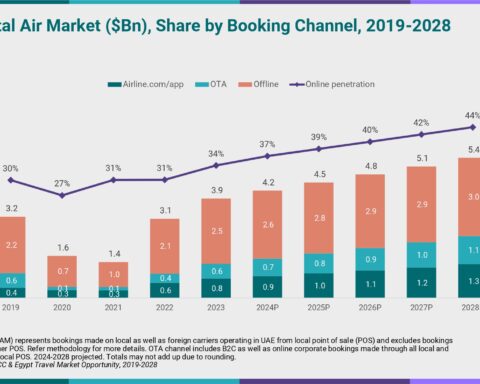Endocrinologist from global health system offers wellness tips and highlights why individuals should know their blood sugar numbers and how new-technology monitors can help
Many people with diabetes are able to fast safely and enjoy the full spiritual, physical and mental health benefits of Ramadan, provided they are medically cleared and take some necessary precautions, says an expert from global health system Cleveland Clinic.
“Alongside spiritual practices, charitable endeavors and spending time with loved ones, people with diabetes can focus on improving their health during Ramadan,” says endocrinologist Hasan A. Husni, M.D. “Lifestyle factors such as a poor diet, carrying excess weight, smoking and lack of exercise can all have a negative impact on blood sugar and insulin levels, making diabetes more difficult to manage. Ramadan provides an ideal opportunity to focus on adopting a healthier lifestyle that reduces or eliminates these diabetes risk factors, while also reducing cholesterol levels and improving cardiovascular health.”
Dr. Husni says that, ideally, these individuals should visit their diabetes management team well in advance of Ramadan to ensure they are medically fit to fast. “During this consultation, their care team can advise them on medication adjustments needed while fasting, how to make healthier food choices, how to monitor blood sugar levels, and in which circumstances they may need to break their fast.”
Fasting not only alters the timing of meals; it can also affect sleeping patterns, circadian rhythms, dietary habits, physical activity, and many other things, Dr. Husni points out. He recommends planning ahead using the following four strategies for optimal health during Ramadan.
1. Monitor blood sugar vigilantly
While fasting, people with diabetes are at greater risk for the dangers of very high or low blood sugar levels, and dehydration, says Dr. Husni. Another serious complication is diabetic ketoacidosis, a life-threatening condition that occurs when the body does not have enough insulin to use sugar for energy, so it breaks down fat instead, releasing ketones that build up and cause the blood to turn acidic.
To reduce these risks, it is important to monitor blood sugar regularly, says Dr. Husni. “If you want to minimize the need for finger pricking, a continuous glucose monitoring (CGM) device can be used. This small, temporary and wearable device has a sensor under the skin that measures glucose levels 24 hours a day, and is typically replaced by the wearer every 10-14 days, or as needed.”
2. Recognize warning signs
Individuals need to know the warning signs of high or low blood sugar, and when they need to break their fast in a medical emergency, Dr Husni says. Signs of low blood sugar include shakiness, sweating, nausea, fatigue, a headache, and an irregular or quickened heartbeat, among others. Symptoms of high blood sugar include blurred vision, frequent urination, a headache and increased thirst and/or hunger.
If any of these symptoms appear, the individual should immediately test their blood sugar, Dr. Husni advises. The fast will need to be broken if blood glucose is lower than 3.9 mmol/l (70 mg/dl) or higher than 16.7 mmol/l (300 mg/dl), although some people may need to break their fast at different blood glucose levels depending on their age and overall health, so this should be discussed with their diabetes management team.
3. Eat wisely
Some individuals can gain weight during Ramadan due to various factors including being less active, indulging in carbohydrate-rich foods at iftar, or snacking throughout the non-fasting hours. Dr. Husni adds that when breaking their fast, people often eat quickly, which can lead to overeating as it takes 15 to 30 minutes for the satiety signal to reach the brain.
“It is advisable for individuals to work with a nutritionist who is experienced in diabetes to determine their daily calorie needs for weight loss or maintenance, as the case may be. On this basis, they can create a sustainable meal plan or strategy that ensures the individual is getting the correct balance of macronutrients – proteins, fats and carbohydrates – at suhoor and iftar. Generally, we recommend patients consume around 40% to 50% of their daily calorie intake at iftar; around 30% to 40% at suhoor; and the remainder as a snack at night,” says Dr. Husni.
“Drinking adequate amounts of water during non-fasting hours and limiting intake of caffeine-based or sugary drinks are also important,” Dr. Husni adds. “This is particularly true in areas with hot climates or long daylight hours, where the risk of dehydration and diabetic ketoacidosis is greater.”
4. Get moderate exercise
Dr. Husni points out that among the many benefits of exercise are that it helps to regulate blood sugar, control weight, and support cardiovascular health, but adds that individuals should discuss their exercise plan with their healthcare team. He explains, “During Ramadan, exercise should be undertaken carefully, particularly if the individual takes insulin, putting them at higher risk of having low blood sugar when they exercise. We generally recommend walking as a safe way to exercise, preferably after iftar.”
Dr. Husni concludes, “Ramadan is the perfect time to transition to healthy habits that an individual can build on once the fasting period is finished, to enjoy long-term benefits.”












